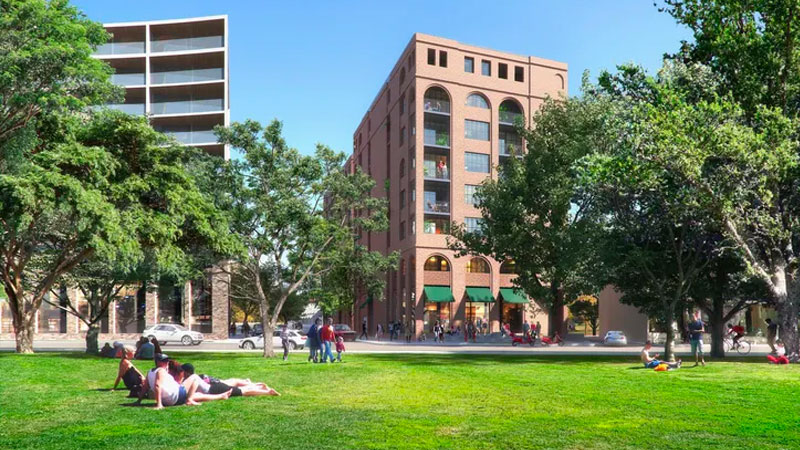City of Sydney Backs Social Housing Projects
Two new social housing buildings have secured development approval from the City of Sydney as planners aim to take advantage of a Covid-depressed development market to deliver long-term affordable housing stock.
The dual-building proposal, located at 17-31 Cowper Street and 2A-2D Wentworth Park Road in Glebe, will comprise a total of 74 apartments, with the northern building accommodating social housing and the southern building market housing.
The site, owned by the NSW government’s Land and Housing Corporation (LAHC), currently provides 19 social housing dwellings across two-storey townhouses.
The proposed planning controls for the site will increase maximum building height, to 8-storeys each, as well as an increase in floor space ratio plus ground floor non-residential spaces.
The project will now move forward with a new concept designed by Sydney-based Johnson Pilton Walker following a design competition.
Both buildings have been designed around a central core, with ventilated lobbies linking five dwellings per floor.
The rooftops of buildings will be given over to communal space, with the southern building having 260sq m of communal allowance and the northern building 215 square metres.

Last year, the UNSW City Futures Research Centre and Community Housing Industry Association (CHIA) identified an urgent need for an additional one million affordable and social housing dwellings by 2036.
With a current deficit of 650,000 homes, the coronavirus crisis has now exacerbated the need for a renewed focus on low-income housing due to slowing home ownership, weakening household spending and a steep rise in unemployment.
Lord mayor Clover Moore says that council was using every opportunity to rebuild public housing stock at a time of great need.
“The pandemic has intensified Sydney’s housing and homelessness crisis, creating an even more pressing need for social housing in the inner city,” Moore said.
“There are around 60,000 people on the waitlist, and people often wait five to ten years for social housing to become available in our local area.”
To boost supply, LAHC began discussions in May to make the most of the present downturn, calling on dormant commercial builders to resupply some of the 125,000 dwellings that comprise the state’s unmet public housing stock.
It is also hoping to show that good-quality medium-density homes can be built in established suburbs of Sydney.
In June, the federal government’s National Housing Finance and Investment Corporation finalised a bond issue worth $562 million, its third and largest bond issue to date, to give social housing providers access to cheaper capital and to develop more homes.
The bonds will give ten community housing providers funding for 12 years at a fixed rate of 2.06 per cent for interest-only loans and save them a collective $80 million in interest payments over the duration.
It will also provide capital for new housing development and acquisitions.
Social housing remains marginalised
Industry super funds have also weighed in, urging for an overhaul the tax system, provide incentives for institutional investors to get behind low-cost housing projects and form a new national affordable homes strategy.
Industry Super Australia chief economist Stephen Anthony said the current health crisis and economic slowdown represented a unique opportunity to arrest the slide in the supply of community and affordable housing.
“The Covid-19 pandemic provides the urgent justification to address the 30-year decline in affordable housing as part of an effective fiscal stimulus package,” Anthony said.
“[However] it still seems that governments are more inclined to help those who can afford to buy or renovate.”
In June the federal government deployed its Home Builder scheme, a six-month building stimulus package to support 20,000 new homes and 7,000 renovations.
However, the rollout was met with widespread criticism, with many seeing it as a missed opportunity to deliver a substantial program of social housing.
“There needs to be an overarching co-ordination that occurs from the federal government,” Anthony said.
“There’s enough money in the bucket at the moment if you bring it all together to solve the problem, but it’s mainly being consumed by mum-and-dad investors.”















